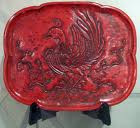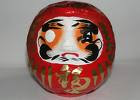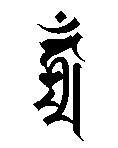:::::::::::::::::::::::::::::::::::::::::::::::::::::::::::::::::::::::::::::::::::::::::::::::::::::
Pen 筆 Fude and Daruma
Fude Daruma 筆だるま
Daruma Fude だるま筆
Fude Daruma 筆だるま
Daruma with paintings of a pen on his belly

source : ichikawashop.com
This is a talisman doll for people to start making a career as calligraphers.
:::::::::::::::::::::::::::::::::::::::::::::::::::::::::::::::::::::::::::::::::::::::::::::::::::::
Daruma Fude だるま筆 pen called "Daruma"

The pens with a big belly for fat letters are DARUMA.
:::::::::::::::::::::::::::::::::::::::::::::::::::::::::::::::::::::::::::::::::::::::::::::::::::::
Kokeshi wooden dolls in the form of a pen

More kokeshi on a pen



Photos from my friend Ishino
. Kokeshi, Wooden Dolls こけし
:::::::::::::::::::::::::::::::::::::::::::::::::::::::::::::::::::::::::::::::::::::::::::::::::::
Daruma with a pen for a beard
kanban for a pen shop
Daruma Museum

. Kanban, Shop Signs, 看板 with Daruma
:::::::::::::::::::::::::::::::::::::::::::::::::::::::::::::::::::::::::::::::::::::::::::::::::::::
- quote -
Kumano fude 熊筆 brushes from Kumano, Hiroshima
Kumano cho is the capital of brushes, and produces 80% of the brushes made in Japan for painting, writing and cosmetics. However, none of the materials used to make the brushes come from Kumano. In other words, natural hairs of sheep, horse, itachi wolf, or raccoon are all imported from North America and China. Materials for brush handles are either from Okayama and Shimane prefectures, or imported from Taiwan and Korea.
Kumano has an interesting history for this successful industry.
A long time ago, the farmers used to buy brushes and ink from Nara and sell them to the locals in order to earn extra income after harvesting rice. The Hiroshima local government encouraged this activity and Kumano began making brushes eventually as well. Later, Japanese calligraphy was introduced as a school subject, and the increased demand for brushes brought stability to the industry in Kumano.
It normally takes 70 steps to create one brush. It is a manual process. It is said to take at least 10 years to be able to handle animal hairs properly and proficiently. The price of brushes varies: for example, one for a calligraphy class goes for about 1000 yen ($10). On the other hand, one used by a professional makeup artist or calligraphy artist will cost anywhere between several tens of thousands and 300,000 yen ($3-400 to $3,000). When Japan’s women soccer champions for the World Cup in Germany received the People’s Honor Award from the Japanese government, a Kumano make-up brush was presented to each player as a special gift.
The tips of the hand-made brushes are naturally uneven, which produces a nice and delicate contact with paper or one’s face, helping to create a superb finish. Therefore, Kumano brushes are very popular among many world-renowned make-up artists.
- - - - - 5-17-1 Nakamizo Kumanocho Aki-gun Hiroshima-ken
- source : japan-brand.jnto.go.jp/crafts -
Kumano Fude Matsuri 筆まつり(ふでまつり)
brush festival
Hiroshima prefecture, Kumano Town 熊野町

Fude Kuyo 筆供養 "memorial service for brushes"
Kumano is the greatest producer of brushes in Japan, more than 80% are made here. On the yearly event more than 1000 used brushes from professional writers are burned in a memorial sercice at the shrine Kitano Tenjin sha.
There is a stone arrangement with the "brush burning flame of eternity" and a lot of brushes hang in the compound between the trees.
During the festival people use large brushes to write their favorite calligraphy and demonstrations are held.
. . . CLICK here for Photos !
This kind of service is also held at other temples and Tenmangu shrines of Japan.
道明寺天満宮筆まつり
. Reference
In Kumano they celebrate
haru no fude no hi 春の筆の日 Day of the Brush in spring
day of the spring equinox

.................................................................................
. Hiroshima Prefecture Festivals
:::::::::::::::::::::::::::::::::::::::::::::::::::::::::::::::::::::::::::::::::::::::::::::::::::::
ningyoofude, ningyoo fude 人形筆 pen dolls

from Airma onsen 有馬温泉 Arima hot spring
Arima is one of the oldest hot springs in Japan, even Hideyoshi used to come there.
The dolls also have a long history and are mentioned already in a travel book of 1682. There used to be five families producing them till the Taisho period, but now only one has remained.
The body of the pen is decorated with colorful silk thread in various patterns. Some of the patterns have auspicious meanings to ward off evil. Some patterns are suited as a present, for example for a wedding.

On the end of the bamboo shaft it a little doll, sometimes resembling a Daruma san, which pops out and seems to dance when using the pen for writing. When the pen is laid on the table, the doll disappears. This is a kind of "mechanical doll" (karakuri ningyoo).
. Folk Toys from Hyogo .
有馬には人形筆の初しぐれ
Arima ni wa ningyoo fude no hatsu shigure
at Arima
there is the first sleet
on the pen dolls
Suzuki Isuzu 鈴木五鈴
source : karasuyama
Arima fude 有馬筆 pens from Arima
komochi fude 子持ち筆 pens with a child

:::::::::::::::::::::::::::::::::::::::::::::::::::::::::::::::::::::::::::::::::::::::::::::::::::::
The Dying Trade of Yamato
The Hankeidou Workshop (攀桂堂, Hankeidō)
Shiga prefecture (滋賀県).
The Hankeidou workshop is renowned for manufacturing traditional Japanese brushes, known generally as unpei fude (雲平筆), a tradition started by Fujino Unpei (藤野雲平) some 400 years ago during the Genna Era (元和年間, 1615 – 1624).
source : beyond-calligraphy.com

:::::::::::::::::::::::::::::::::::::::::::::::::::::::::::::::::::::::::::::::::::::::::::::::::::::
HAIKU and SENRYU
humanity kigo for the New Year
fude hajime 筆始(ふではじめ)first use of the brush
..... shihitsu 試筆(しひつ), shigoo 試毫(しごう)
shikan 試簡(しかん), shimen 試免(しめん)
shiei 試穎(しえい), shiko 試觚(しこ)
shishun 試春(ししゅん)"first calligraphy in spring"
hatsu suzuri 初硯(はつすずり)first use of the ink stone
. Calligraphy and Kigo
.................................................................................
taking the brush
365 days
first calligraphy
Gabi Greve
:::::::::::::::::::::::::::::::::::::::::::::::::::::::::::::::::::::::::::::::::::::::::::::::::::::
. Matsuo Basho 松尾芭蕉 - Archives of the WKD .
露凍てて筆に汲み干す清水かな
tsuyu itete fude ni kumihosu shimizu kana / hitsu ni
The moss pure spring
beginning to melt,
I soak it dry with my brush:
the pure water spring
source : Tr. Barnhill
winter of 1687 貞亨4年. Oi no Kobumi 笈の小文
Written at a haikai meeting at Nagoya 名古屋昌圭亭.
Some sources link this to the pure water of a spring in Yoshino.
dew is freezing
and with my brush I soak up
this pure water . . .
Tr. Gabi Greve
This hokku has the cut marker KANA at the end of line 3.
Basho stepping out into the garden after a very cold winter night, trying to pick up some dew from the leaves and write a hokku with it.
This is written in memory of Saigyo:
とくとくと落つる岩間の苔清水
汲み干すほどもなき住まひかな
tokotoku to otsuru iwama no koke shimizu
kumihosu hodo mo naki sumai kana
Trickling down,
pure spring water falls
over the mossy rocks,
not enough to draw up
for this hermit life.
Tr. Barnhill
Another version is
凍て解けて筆に汲み干す清水哉
ite tokete hitsu ni kumihosu shimizu kana
. ite tokete fude ni kumihosu shimizu kana .
. Basho and Saigyo 芭蕉と西行法師 .
. . . . .
大津絵の筆のはじめは何仏
Ootsu e no fude no hajime wa nani botoke
. the first brush stroke
for an Otsu-E painting -
which Buddha will it be ? .
:::::::::::::::::::::::::::::::::::::::::::::::::::::::::::::::::::::::::::::::::::::::::::::::::::::
fude nagete tsuki ni mono iu bakari nari
I throw my brush away -
from now on I speak only
to the moon
. Koha (Kooha) 香波
:::::::::::::::::::::::::::::::::::::::::::::::::::::::::::::::::::::::::::::::::::::::::::::::::::::
mannenhitsu 万年筆 fountain pen
from Old Imari pottery kilns

古伊万里風楼閣桜図 万年筆
黄緑彩兜唐草 万年筆
染付章魚唐草濃 万年筆
- Shared by Ken Ichihashi, facebook -
:::::::::::::::::::::::::::::::::::::::::::::::::::::::::::::::::::::::::::::::::::::::::::::::::::::::
fudeya 筆屋 brush maker

source : novelty3355.jugem.jp
wooden shop sign of a brush maker 木製筆屋の看板
From professional painters to official letter writers to bookkeepers to children at Terakoya schools . . . everyone needed a pen to write in the Edo period.
When a pen was made, the brush maker licked it in a final test of its finishing.
Therefore we have the following Senryu :
奥様は筆屋が唾をなめ給う
okusama wa fudeya no tsuba o nametamau
the housewife
licks the spittle
of the brush maker
.......................................................................
- quote
Edo Fude 江戸筆 Handmade Calligraphy Brushes
■ Traditional Technologies and Techniques
1- Hair for calligraphy brushes is chosen based on the intended brush type and the length of the brush tip. The craftsman relies on instincts developed over many years of brush making.
2- Removing defective strands of hair is part of the tip-formation process. The tip represents the most important part of a calligraphy brush. A metal comb is used to comb through the strands of hair and align them accordingly, and strands without proper tips as well as those that are incorrectly oriented are removed from the clump.
3- The tip is formed by arranging strands into clumps for the very end of the tip (inochige 命毛), the middle portion of the tip (nodoge 喉毛) and the base portion of the tip (koshige 腰毛). One brush's worth of hairs is then taken from each of these clumps to make a tip. Advanced skills are required to both ensure balanced spacing between the hairs and to also achieve an elegant brush-tip shape.
4- Nerimaze 練りまぜ is a process carried out to achieve an evenly distributed mix of differing strand lengths, and it makes a major contribution to determining the final quality of the brush tip.
5- Shintate 芯立て is the formation of the final brush-tip shape using a ring-shaped implement. The craftsman feels the tip by hand to check its firmness and resilience, etc. The volume of hair used in the brush tip may be adjusted accordingly in response to how the tip feels.
■ Traditionally Used Raw Materials
-- Brush Tip - goat hair, horse hair, pig hair, raccoon dog hair, weasel hair, cat hair, and other varieties.
穂―山羊毛・馬毛・豚毛・たぬき毛・いたち毛・猫毛ほか
-- Brush Handle - Bamboo, wood 軸―竹・木
■ History and Characteristics
Concerning the "calligraphy brush," one of the "Four Treasures of Study" within the Chinese classical canon, in the Nihon Shoki (The Chronicles of Japan) it is recorded that in March of the 18th year of the reign of the Empress Suiko (610); "the methods of making paper and ink were brought about" by the Buddhist priest Damjing. This reference indicates that Damjing was a pioneer figure with respect to the arrival in Japan of writing implements in the form of calligraphy brushes, ink and ink stones.
Since then, there have been numerous advances and improvements made in production technologies as calligraphy brushes (and the written word that accompanied them) became key implements in Japan's cultural and traditional development, with many different types of brush produced for different purposes.
Around the middle of the Edo Period, along with the rise to prominence of the commercial class, Edo witnessed a dramatic increase in the number of "temple schools". In that the general population also began to write, calligraphy brushes came to be widely used among the masses. Furthermore, a number of classic Edo Fude (handmade calligraphy brushes) were born around this time as production technologies employed by craftsmen developed even further. The dominant production method in Edo was called nerimazeho 練りまぜ法 (literally "the mixing method"), and its processes were established by Hosoi Kotaku (1658-1736) in the Genroku Era (1688-1704). This method of manufacture went on to spread quickly due to the new national education system that was promulgated in the fifth year of the Meiji Era (1872).
Due to the combined calamities of the Great Kanto Earthquake (1923) and the Pacific War (1941-1945) many calligraphy brush craftsmen left Tokyo. However, those who were left focused both on the production of high-end calligraphy brushes, and on working to keep the relevant technologies and techniques alive.
Goat hair, horse hair, pig hair, raccoon dog hair, weasel hair and cat hair are but some of the materials used to make the tips of calligraphy brushes. In many cases the hair of goats native to China is used, with the hair grown below the nape of the neck in the vicinity of the upper forequarters being considered the best quality and thus highly prized. When making a calligraphy brush, in forming the tip which is said to represent the most important part, a metal comb is used to comb through the hair strands and align them accordingly, with strands without proper tips as well as those that are incorrectly oriented being removed. Shaping is the process of forming the brush tip, and advanced skills are required to ensure balanced spacing between the hairs and to also achieve an elegant shape.
Nerimaze is the process of taking strands of different lengths and mixing them evenly. This process plays a major role in determining the final quality of the brush tip. Shintate is formation of the final shape of the tip using a ring-shaped implement. The craftsman feels the tip by hand to check its firmness and resilience, etc. The volume of hair used in the brush tip may be adjusted accordingly in response to how the tip feels.
Tokyo Stationary Industrial Association
- source : www.sangyo-rodo.metro.tokyo.jp - 32 -
.......................................................................
- quote -
Tokyo Teue Brush 東京手植ブラシ Handmade Brushes, "western brushes"
Traditional Technologies and Techniques
01 Processing of base wood:
The base wood is cut and planed down.
02 Marking:
A template is placed over the wooden base of the brush and the bristle insertion positions are marked out using ink.
03 Creation of bristle holes:
Bristle holes are made at the points marked in ink on the base wood.
04 Bristle cutting:
The bristles are cut to a specific length.
05 Bristle mixing:
Bristles are mixed by hand so that the (soft) tips and (hard) roots are aligned identically.
06 Sorting by hand:
Short bristles, bristles with irregular shapes and other problematic strands are removed.
07 Bristle insertion:
Predetermined clump quantities of bristles are picked out precisely and folded in two, and a metal wire is passed through and drawn along the center of the wood to pull the bristles firmly down into the bristle holes.
08 Cover attachment:
A thin, wooden cover piece is attached to hide the metal wires and make the product easier to use.
09 Base wood finishing:
① The size of the main body and attached cover are made uniform and the physical feel of the product when held is improved.
② Grooves are added to the side portions to make the product easier to hold.
10 Bristle trimming:
The bristle tips are trimmed to achieve a uniform, predetermined bristle length throughout.
11 Finishing:
The product's surfaces are painted uniformly.
Traditionally Used Raw Materials
- Bristles: 刈萱 Karukaya, Palm, Cedar, Tampico, fern, horse hair, pig hair, goat hair.
- Base wood: Katsura, Magnolia, Cherry, Japanese Beech, Bamboo
History and Characteristics
Brush production (of so-called "western brushes") commenced in Japan around the 7th year of the Meiji Era (1874). At the time, brushes made in France were used as product examples. In the 10th year of the Meiji Era (1877), the First National Industrial Exhibition was held at Ueno Park, with a display of western-style brushes being very well-received. Following on, craftsmen who had traditionally made Japanese brushes began to get involved in the manufacture of western brushes. Production started off with horse hair being used for bristles, oak being used for timber, and bristle holes being made using hand gimlets.
In Meiji 21 (1888), Japan's first brush manufacturing company was established by Matsumoto Jutaro (1844-1914), who was at the time a director of the Dai Hyakusanju Bank (the National 130th Bank). Due to numerous improvements, what resulted was a penetration of brushes into society in much the same way as can be witnessed today. The brush manufacturing industry developed focusing on Tokyo and Osaka. As new machinery was introduced to industries, it came to pass that there were a great variety of brushes used for industrial purposes in workplaces. Moreover, as Japanese home life became increasingly westernized, demand for household brushes increased. Accordingly, in locations such as Wakayama Prefecture, brush manufacturing companies introduced large-capacity machinery and mass production commenced. Later on, in factories in Osaka and Wakayama, even greater industrialization steps were taken. In Tokyo by contrast, a city that had started out with many businesses engaged in producing industrial-purpose brushes, highly-durable brushes whose bristles were hand-inserted were developed.
Because hand-inserted bristles in such brushes run together in that they are all pulled down by an internal metal wire called a "pulling string," they are more robust than bristles in machine-made brushes because with machine-made brushes bristles are directly inserted into each individual hole (and they are not secured by a "pulling string"). It is for this reason that Tokyo's brush manufacturers continue the traditional practice of inserting brush bristles by hand.
Tokyo Brush Manufacturing Association
- reference source : sangyo-rodo.metro.tokyo.jp - 38 -
.......................................................................
. shokunin - Edo craftsmen 江戸の職人 .
:::::::::::::::::::::::::::::::::::::::::::::::::::::::::::::::::::::::::::::::::::::::::::::::::::::::
[ . BACK to WORLDKIGO . TOP . ]
[ . BACK to DARUMA MUSEUM TOP . ]
- #fudebrush #kumanofude -
:::::::::::::::::::::::::::::::::::::::::::::::::::::::::::::::::::::::::::::::::::::::::::::::::::::
























































